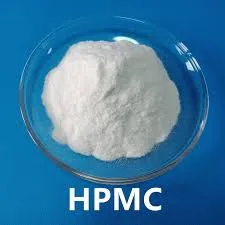
დეკ . 18, 2024 13:20 Back to list
hydroxyethyl cellulose structure
Understanding Hydroxyethyl Cellulose Structure and Applications
Hydroxyethyl cellulose (HEC) is a water-soluble polymer derived from cellulose, a natural polymer found in the cell walls of plants. The chemical modification of cellulose to create hydroxyethyl cellulose involves the etherification process, wherein ethylene oxide reacts with cellulose. This results in a product that possesses unique properties, making it a versatile ingredient in a wide array of applications, including pharmaceuticals, cosmetics, and various industrial uses.
Chemical Structure and Properties
At its core, hydroxyethyl cellulose consists of a backbone of glucose units linked by β-(1→4)-glycosidic bonds, similar to other cellulose derivatives. However, HEC distinguishes itself through the introduction of hydroxyethyl groups, which are appended to the glucose units of the cellulose chain. The degree of substitution (DS) of hydroxyethyl groups on the glucose units can vary, influencing the solubility and viscosity of the resulting polymer.
The hydroxyethyl groups impart hydrophilicity to the polymer, allowing HEC to dissolve easily in water, thereby forming a clear and viscous solution. The solubility of HEC is influenced by several factors including temperature, pH, and concentration. Because of its unique amphiphilic nature, hydroxyethyl cellulose can interact with both hydrophilic and hydrophobic substances, making it an excellent thickening agent, stabilizer, and emulsifier in various formulations.
Applications of Hydroxyethyl Cellulose
1. Pharmaceuticals HEC is widely used in the pharmaceutical industry, primarily as a thickening agent and stabilizer in liquid formulations. Its ability to control the viscosity and release rate of active pharmaceutical ingredients (APIs) makes it ideal for suspensions, ointments, and gels. Moreover, HEC can be employed as a binder in tablet formulation, enhancing the mechanical strength and uniformity of the tablets.
hydroxyethyl cellulose structure

2. Cosmetics and Personal Care Products Due to its emulsifying and thickening properties, hydroxyethyl cellulose is a popular ingredient in lotions, creams, shampoos, and other personal care products. HEC helps to stabilize emulsions, improve texture, and provide a desirable viscosity without affecting the clarity of the product. Additionally, its mild nature and biocompatibility make it suitable for sensitive skin formulations.
3. Construction Industry HEC finds considerable utility in the construction sector, particularly in the formulation of mortars, tiles adhesives, and other building materials. Its water-retaining properties ensure that the mixtures remain workable for extended periods, while also enhancing adhesion to surfaces. The use of HEC in construction materials improves the overall performance by contributing to better bonding and flexibility.
4. Food Industry Though less common than other cellulose derivatives, hydroxyethyl cellulose is occasionally utilized in the food industry as a thickener and stabilizer in specific applications. Its role in modifying texture and mouthfeel can enhance the sensory characteristics of various food products.
Environmental Considerations and Safety
As a cellulose derivative derived from renewable resources, hydroxyethyl cellulose is considered an environmentally friendly material. It is biodegradable and non-toxic, further emphasizing its suitability across multiple industries. Regulatory agencies, including the FDA and the European Commission, have approved HEC for use in food and pharmaceutical applications, attesting to its safety for human consumption.
Conclusion
Hydroxyethyl cellulose is a remarkable polymer that bridges the gap between natural and synthetic materials, leveraging cellulose's inherent properties while enhancing its functionality through hydroxyethyl substitution. Its versatility and specificity in applications across various industries underscore its importance in modern formulations. As research and development continue to advance, the potential for hydroxyethyl cellulose is only expected to grow, making it a key ingredient for future innovations in pharmaceuticals, cosmetics, and beyond.
-
The Widespread Application of Redispersible Powder in Construction and Building Materials
NewsMay.16,2025
-
The Widespread Application of Hpmc in the Detergent Industry
NewsMay.16,2025
-
The Main Applications of Hydroxyethyl Cellulose in Paints and Coatings
NewsMay.16,2025
-
Mortar Bonding Agent: the Key to Enhancing the Adhesion Between New and Old Mortar Layers and Between Mortar and Different Substrates
NewsMay.16,2025
-
HPMC: Application as a thickener and excipient
NewsMay.16,2025
-
Hec Cellulose Cellulose: Multi functional dispersants and high-efficiency thickeners
NewsMay.16,2025







